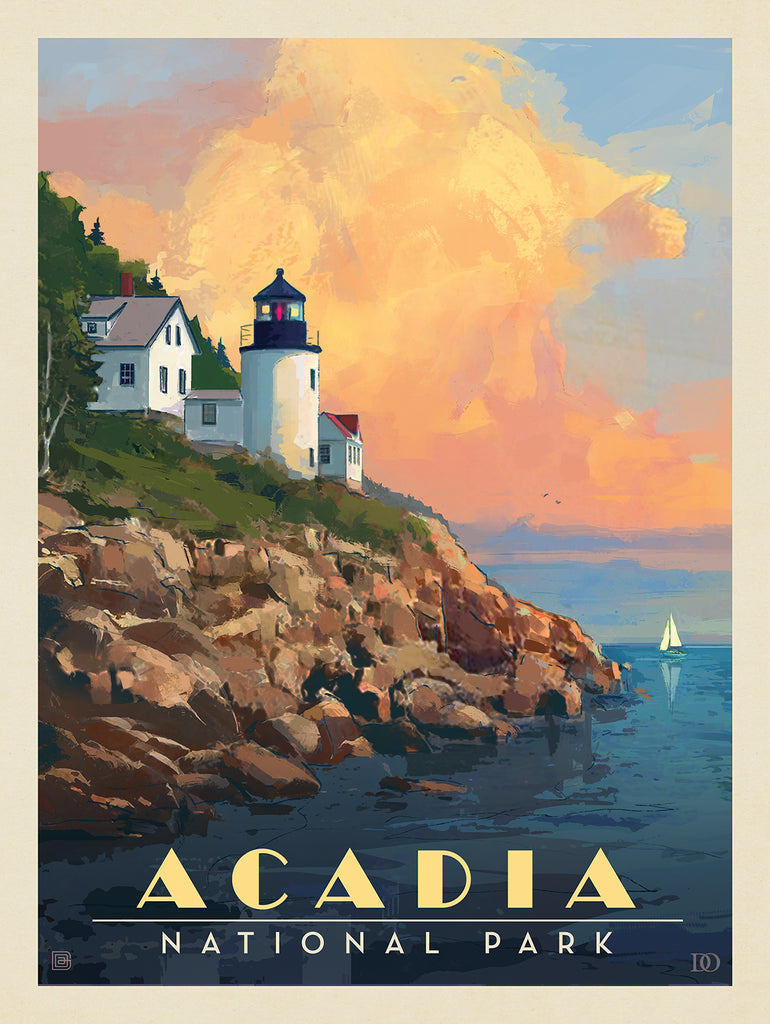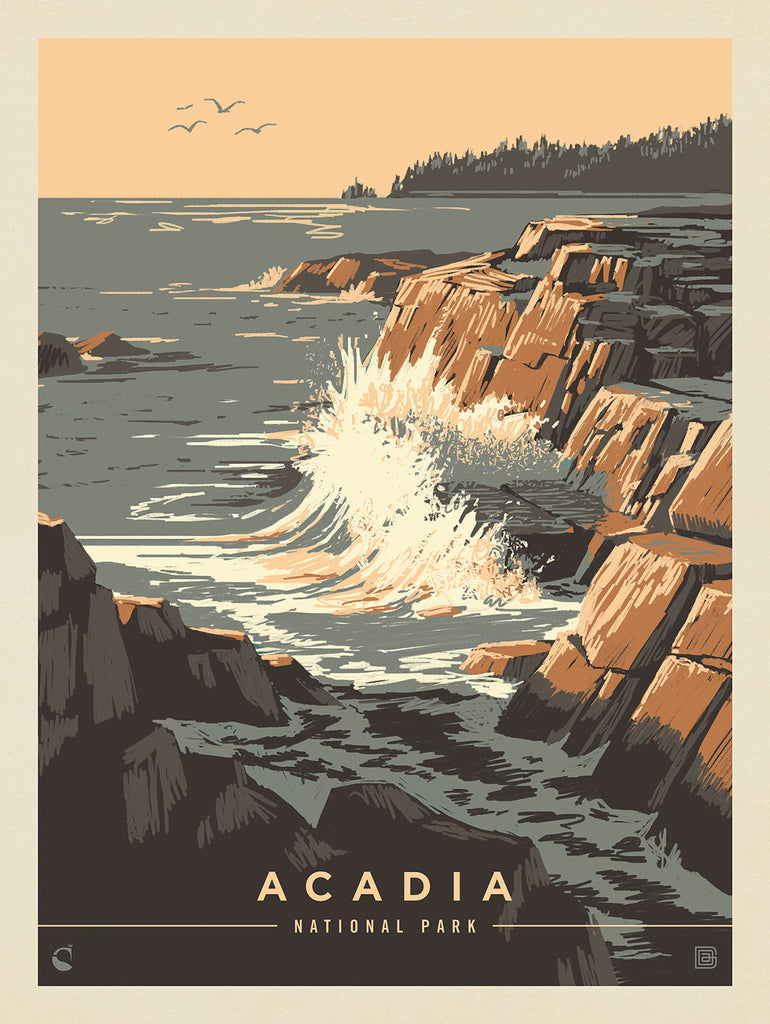Stories Behind the National Parks - Part #3
Though we see the National Parks in the present day as stunning natural lands where we can appreciate the vast biodiversity of the United States, the parks also offer rich history lessons. A trip to a National Park affords one the opportunity to learn about America's geological, anthropological, cultural, and biological history.
To honor the National Parks and what they were before they were National Parks, we launched a mini-series on the history behind some of this country's most cherished public lands.
This week we launch Part #3 in the series, where we explore the history behind Acadia National Park, the Crown Jewel of the North Atlantic Coast.
Acadia National Park
The National Park Service's introduction to Acadia National Park reads as such:
"Acadia National Park protects the natural beauty of the highest rocky headlands along the Atlantic coastline of the United States, an abundance of habitats, and a rich cultural heritage. At 3.5 million visits a year, it's one of the top 10 most-visited national parks in the United States. Visitors enjoy 27 miles of historic motor roads, 158 miles of hiking trails, and 45 miles of carriage roads."
There's no doubt about it, Acadia National Park is a stunning panoply of natural features, from the iconic, cliff-like coastline to rock-strewn headlands, deep, ancient forests, and winding two-lane roads and carriage trails. But what about the history behind Acadia? How did it become a National Park, and what was it before it was a National Park?
Indigenous History
Acadia National Park has a rich human history that dates back more than 12,000 years. While many tribes came and went throughout history, the most prominent tribe to settle the region that is now Acadia National Park was the Wabanaki. Individual tribes came together to form the Wabanaki Confederacy, a group of five related Algonquian nations; the Maliseet, the Mi'kmaq, the Passamaquoddy, the Abenaki, and the Penobscot (shown below in ceremonial tribal attire.)

Mount Desert Island, the focal point of Acadia National Park, was called "Pemetic" by Indigenous peoples, or "Range of Mountains." And beyond that, the Indigenous words for the lands of present-day Acadia were instrumental in naming the park. The etymology of the park's name begins with the Mi'kmaq term "akadie," which means "Piece of Land." This term was rendered as "Acadie" by French explorers and then translated into English as "Acadia."
The islands, rocky headlands, and interior forests of Acadia played a crucial role in the lives of Indigenous peoples. The Wabanaki traveled to Mount Desert Island in birch bark canoes to hunt, fish, gather berries, harvest clams, and collect basket-making materials like sweetgrass to trade with other Wabanakis.
By the early-17th century, an intertribal confederacy called Mawooshen had formed in the area now designated as Acadia National Park. The tribes set up a major trading post in what is now the town of Castine. For many years following its establishment in 1615, the Indigenous trading post acted as a regional hub for French, English, and Dutch traders. The Wabanakis traded seal skins, moose hides, and furs for European commodities.

Unfortunately, the peaceful coexistence was not meant to be, as by the mid-1600s, warfare and introduced diseases had all but wiped out most of the Wabanaki tribes from Mount Desert Island southward to Cape Cod.
In the present day, the descendants of 16th and 17th-century Wabanaki still live on Mount Desert Island and on the mainland. They hold the annual Bar Harbor Native American Festival, and they run a Wabanaki educational center called T.R.I.B.E. (Teaching and Research in Bicultural Education). Visitors to Acadia National Park who are interested in learning more about the Indigenous history of the park should check out the cultural events, exhibits, and happenings at the Abbe Museum on Mount Desert Island.
Acadia - Becoming a National Park
Acadia National Park did not happen overnight. Though people from New England and beyond had been coming to Mount Desert Island and the surrounding islands for decades and enjoying the natural wonders of the region with every visit, it wasn't without great effort, fundraising, convincing, and public advocacy that the region finally became a National Park.
Some historians would suggest that the families who lived on the residential side of Mount Desert Island had to battle vigorously to protect, conserve, and preserve the lands they intended to designate as a park. It started with a group called the Village Improvement Society in 1901, which then became the Hancock County Trustees of Public Reservations months later. Almost immediately, the group came under attack for sectioning off and preserving 6,000 acres of land that had been of interest to the logging and timber industry. The Hancock County Trustees of Public Reservations almost had their tax-exempt status revoked, which would have made the 6,000 acres too expensive to own.
George B. Dorr, a tireless spokesman for conservation and wilderness protection, saw the writing on the wall and immediately went to work to garner federal protection and create a National Park on Mount Desert Island. In 1916, President Woodrow Wilson heard Dorr's proposal and agreed, announcing the creation of Sieur de Monts National Monument. By 1919, more property was acquired for the park, and it became Lafayette National Park. In 1929, Congress decided to rename the park to Acadia, in honor of both the French settlers and the Indigenous peoples who lived on Mount Desert Island long before the park was created.

To learn more about the evolutions of Acadia National Park, you can visit Friends of Acadia, a nonprofit conservation group dedicated to preserving the park for future generations to enjoy.
Honoring History with National Park Poster Art
To celebrate the history of one of America's most beautiful parklands, Anderson Design Group's award-winning poster artists hand-rendered vintage poster art and National Park art of Acadia National Park. The designs take inspiration from the WPA-commissioned travel art and National Park poster art of the early-20th century, the same artwork made to encourage Americans to travel to recently created National Parks.

Every time you purchase National Park art from Anderson Design Group, we donate a portion of our profits to the National Park Foundation. Your new artwork and home decor items help ensure that the National Parks will be there for future generations to enjoy!


Tune in next week for Part #4 of our exploration of the history of our most cherished natural lands.
-Ren Brabenec
Anderson Design Group Writing Staff
← Older Post Newer Post →

